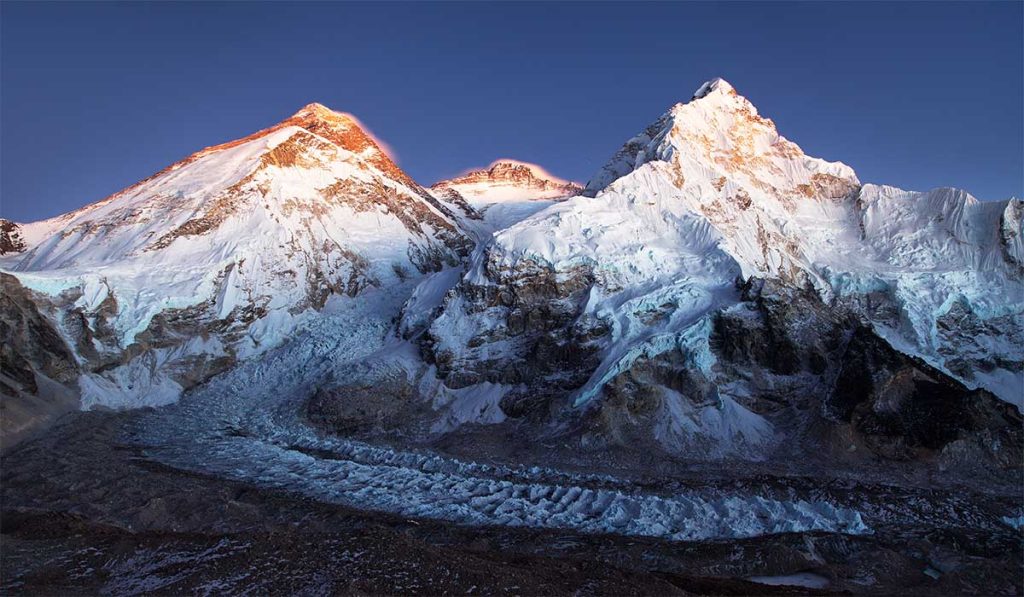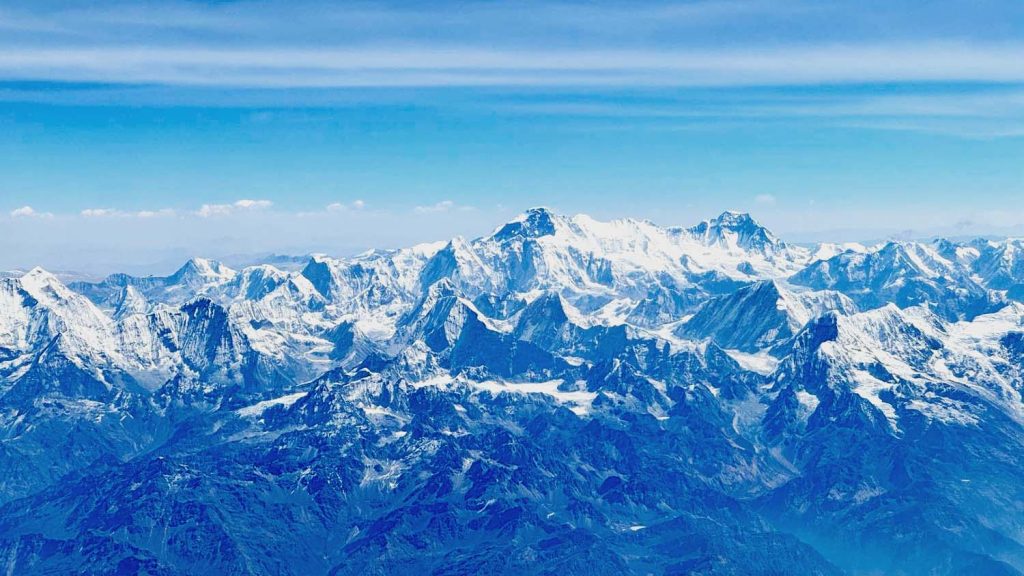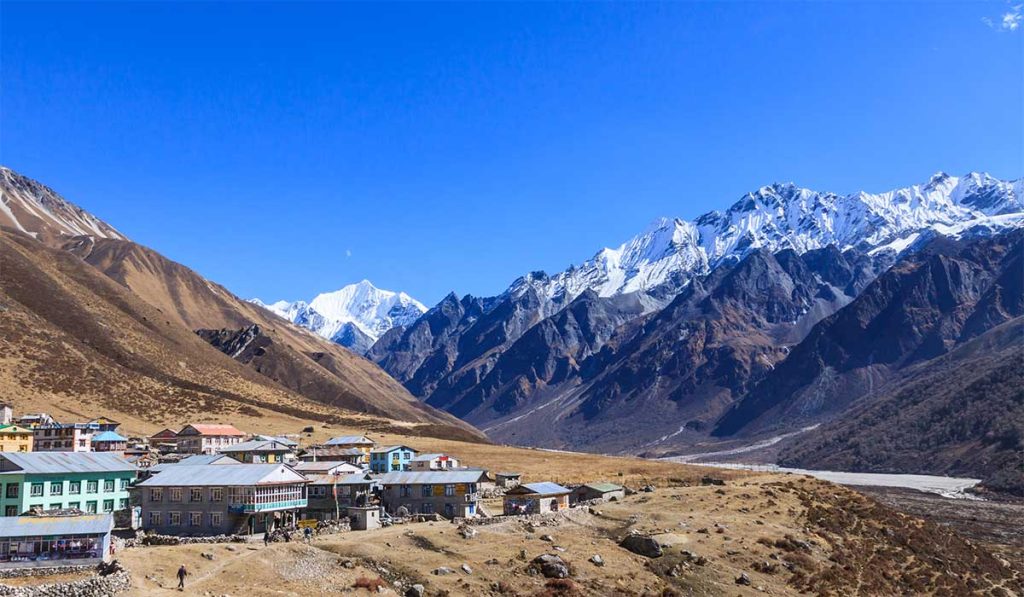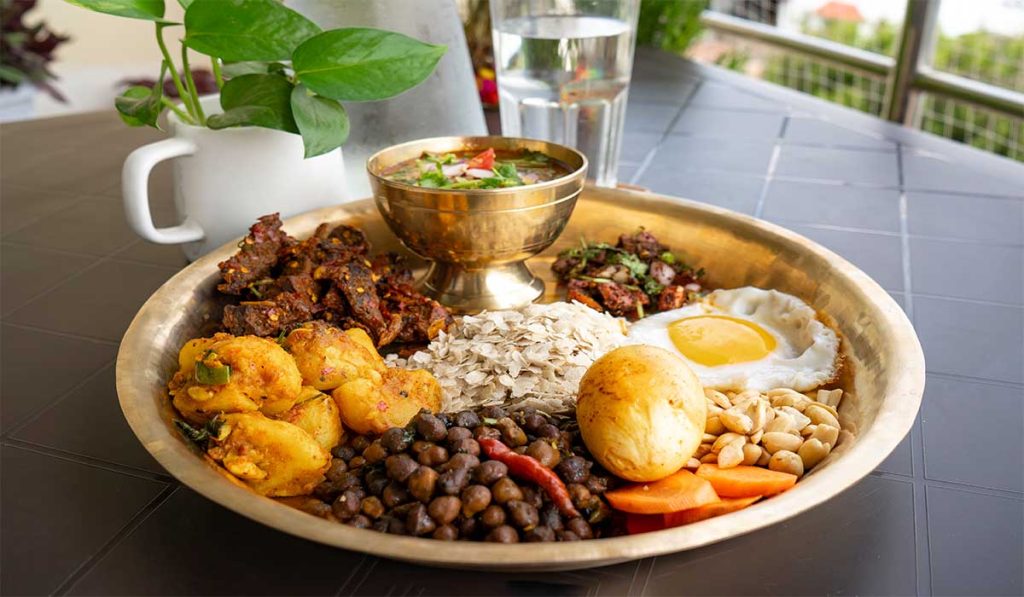
Introduction to The Everest’s Routes
Each climber keeps Mount Everest at the top of their bucket list with their own stories and desire to summit the world’s highest mountain. Whether you dream of conquering the summit or aim to learn about its access, you must have heard about the two routes— Mount Everest North Route and the Mount Everest South Route. Via both routes, Everest welcomes hundreds of climbers yearly. So, which is the best route to climb Everest? We are going to cover everything in this blog.
If we talk about the popularity of the routes among climbers, it’s the southern route that appears more feasible. The southern route from Nepal is widely appreciated and preferred to climb by most climbers because of being less technical than the northern route. Yes, that’s right. The northern route is more technical, which directly means it is more difficult. Now the question arises—if it is more difficult, why do people still use the route? Well, there is a reason. Find out yourself in this blog.
How Could Choosing the Right Route Influence Your Journey?
No matter how wisely you prepare and how much training you have, choosing the right route can easily decide how safe your journey is, how much you have to pay, and what experience you are getting. In short, it can make or break your journey. And obviously travelers want to experience the best. So, to find the best one for you, we’ve provided detailed explanations and comparisons of both routes.
Mount Everest South Route: The Classic One
| Everest South Route Quick Facts | |
|---|---|
| Category | Facts |
| Country | Nepal |
| First Successful Ascend | 1953 by Tenzing Norgay Sherpa and Sir Edmund Hillary |
| Starting Point | Lukla (2860 m) |
| Base Camp Altitude | 5,364 m (17,598 ft) |
| Trek distance to Base Camp | 65km (one way) |
| Trek duration to Base Camp | 8 – 10 days |
| High Camps | Camp I (6,065 m), Camp II (6,500 m), Camp III (7,200 m), Camp IV (7,950 m) |
| Climbing Season | Pre-monsoon (April–May), Post-monsoon (Sept–Oct) |
| Permit Cost | 11,000 per climber (Spring season) |
| Total Expedition Cost | $35,000–$70,000+ |
| Rescue Option | Helicopter evacuation (up to camp II) |
The southern route is the most chosen route by Everest climbers because of its rescue possibilities, Sherpa guides, and comparatively less difficulty. This is the path once trailed by Tenzing Norgay and Sir Hillary, the first ones to conquer the Everest.
Journey Overview
The journey of climbers pursuing the southern route generally starts after their scenic flight from Kathmandu to Lukla. The Lukla Tenzing-Hillary airport has one of the most thrilling runways in the world. From Lukla, trekkers generally start their trek to the Everest Base Camp. The trek passes through popular places like the Namche Bazaar, Khumbu Valley, Tengboche, and Lobuche, providing one of the best trekking experiences in the world, which takes around 8-10 days to complete. The real journey of climbing begins when the trekker reaches the Base Camp.

Breakdown of Camp in the Southern Route
When the climbers reach the Base Camp, they generally have to move up and down several times as they have to acclimate their bodies to the altitude. This begins from the Camp I.
Camp I (6,065 m)
To reach the camp, trekkers have to pass the Khumbu Icefall, which is the first major obstacle climbers face during their Everest expedition. The Khumbu Icefall is a dangerous section containing deep crevasses and shifting ice blocks. In order to pass through this pass, climbers must have a technical understandings and experience of rope, harnesses and iceaxes.
Camp II (6,500 m)
Camp II lies ahead of Camp I. It is a safer place used for taking rest, eating, and planning for the further journey.
Camp III (7,200 m)
Reaching camp III is a technically demanding part. It lies in the steep Lhotse face where an icy wall obstructs your way. This must be climbed to reach Camp III. For that, climbers have to use a fixed rope and requires a good physique.
Camp IV (7,950 m)
At an altitude of almost 8000m lies the Camp IV, where the air is dangerously thin and the temperature is brutally cold. This is the last resting point of the Climbers. Reaching here is itself an achievement; however, a bigger test awaits ahead when climbers pass the Death Zone.
Summit (8,848.86 m)
Reaching here is the greatest achievement of life for any climber. A place where you are above everything, a place from where you can see the curvature of the Earth, the Tibetan plateau, and the endless number of peaks.
Why is the Everest South route the choice of more climbers?
Statistically, the Everest South route is the choice of a large number of trekkers compared to the Northern route. It is because of the following reasons:
Better Rescue Options:
Helicopter rescue is possible in Nepal up to Camp II. This has been saving the lives of climbers getting injured or caught by altitude sickness. Generally, happens to the first-time climbers of Everest, and the symptoms is notable as soon as they cross the Base Camp. Even if they fall ill at the higher camps, the chances are of being rescued is relatively higher.
Trekking Experience before the Climb
The Everest Base Camp trek is one of the most rewarding treks in Nepal. Most climbers usually have prior experience of trekking here. This makes them more familiar with the route and creates an emotional connection as well.
Experienced Sherpa Guides
The south route is home to the Sherpas of Nepal, who had prior experience of climbing in Everest. They work there as guides and porters. This adds benefits to the climber, letting them climb the peak with the legends of the mountain, ensuring more safety.
Commercialization
Unsurprisingly, there are several agencies that arrange the Everest expedition. Their competition is not with the Northern route but with other agencies with a similar motto. Due to this, climbers are given more choices and promises, ultimately encouraging them to choose the expedition with them.
Challenges of the Everest South Route
One of the biggest challenges is the Khumbu Icefall. This disastrous part has already taken so many lives, who were just beginning their expedition.
Overcrowding is another serious concern. Due to the growing popularity of Everest, Nepal issues 370–390 permits per year on average. This is a huge number, indicating 1,200 – 1,500 people (including the team members) during a single peak season on Everest.
The weather on this route is quite unpredictable, bringing storms out of nowhere or hitting anyone with a sudden frostbite. It accounts for almost 40% of the deaths on Everest.

Mount Everest North Route (China Side)
| Northern route quick facts | |
|---|---|
| Catagory | Facts |
| Country | China |
| First Successful Ascent | 1960 by Wang Fuzhou, Gongbu, and Qu Yinhua (Chinese team) |
| Starting Point | Lhasa to Base Camp (5,150 m) |
| Base Camp Altitude | 5,150 m (16,896 ft) |
| Distance to Base Camp | 700 km by road (No trekking required) |
| Trek duration to Base Camp | 20 – 24 hours (by Jeep) |
| High Camps | Intermediate Camp (5,800 m), ABC (6,500 m), Camp I (7,000 m – North Col), Camp II (7,600 m), Camp III (8,300 m) |
| Climbing Season | Pre-monsoon (late April–May) – Shorter weather window |
| Permit Cost | $ 7,000 – 9,000 per climber (via China Tibet Mountaineering Association) |
| Total Expedition Cost | $ 30,000 – $ 55,000+ |
| Rescue Option | No helicopter evacuation above Base Camp |
Journey Overview
The trip to Base Camp marks the start of the journey. Lhasa of Tibet (3,656 m) is the place from which climbers start their Jeep ride to the Base Camp, which is about 700 km away. This long ride makes the journey a bit easier for the legs.
Climbers pass through the Tibetan Plateau on their ride, which is a scenic trip. The first stop is usually the second largest city, Shigatse (3,800 m) in Tibet. The drive takes about 6 to 7 hours, and climbers spend the night there to acclimatize to the thin air.
The next stop of the trip takes climbers to the remote city of Tingri, which is about 4,300 m high. This requires about 6 to 7 hours. Tingri is a dry and cool place, and an important stop for acclimatization. Spending one or two nights here helps reduce the risk of altitude sickness.
Finally, climbers drive up to Everest Base Camp (north), which is at 5,150 m. This drive takes about 4 to 5 hours and passes the highest monastery in the world, the historical Rongbuk monastery.
Once you are in the base camp, the real campaign begins. The climbers often spend a few days resting and acclimatizing, while the support staff prepare for the high camps. They will then move to the Intermediate camp (5,800 m) and then the Advanced Base Camp or ABC (6,500 m).
From the ABC, the rough climbs to the North Col (7,000 m), followed by Camp II (7,600 m) and Camp III (8,300 m). Camp III lies inside the death zone. From there, climbers start the last summit push to reach the top of the world at a distance of 8,848.86 meters.
Who is this route best for?
It is true that reaching the Base Camp is a lot easier in the northern route than in the southern route, but that doesn’t help the climbing to be a bit less difficult. Before thinking about the ease of reaching the Base Camp, you must think about the technical, physical, and mental challenges that this route has hidden above. Here are the criteria that you must meet in order to think about climbing the Everest via this route:
- Prior mountain climbing experience and have mastered the technical gear, including harness, ice axe, and crampons.
- Very decent physical fitness and strong endurance
- Familiar with the extreme cold, harsh weather, and thin air.
- Great acclimatization skills and a strong immunity.
- Prepared for carrying oxygen supplies on own and managing them.
- And above all, ready mentally to face long days in cold, isolation, and tough challenges.
Challenges of the Everest North Route
Climbing the Everest isn’t an easy task on either route. However, climbing from the north presents comparatively more challenges. The most crucial ones are explained here briefly:
The Harsh Weather: Weather in the North Route of Everest can be tricky and unpredictable. The harsh cold can catch anyone at any time. Moreover, the sudden storms and strong winds makes the climbing more difficult.
Technical Sections: The ridge of the summit is steep and exposed. This makes climbing here very technical. Some sections like the ‘Second Step’ are famous for their difficulty. The Second Step is nearly a vertical wall located at the altitude of 8,610 m, which must be climbed inorder to reach the summit.
Limited Rescue Option: If a climber faces an emergency above the Base Camp. Saving him/her becomes very difficult as the helicopters are not allowed to go above the Base Camp. In this case, bringing the victim down is almost an impossible challenge, especially its the higher zones.
Strict Regulations: The rules and regulations of climbing in the Northern region are themselves a challenge. They are changes or updates by the Chinese government with a very little notice. So, remaining updated becomes very important.
Limited Facilities: Compared to the Southern side, the northern Base Camp and higher ones have fewer services and facilities. This adds questions to the comfort and safety of climbers.

Cost Breakdown: Nepal vs China
South Route (Nepal) Cost
The Nepal government charges $11,000 per climber for the spring season (April-May), which is the most popular time to climb. The total cost of a guided campaign usually varies from $35,000 to $70,000 or more, depending on the service level. Cheap packages can offer basic support, while advanced campaigns include high-quality local guides, better food and extra oxygen.
Cost of the Mount Everest North Route (Tibet)
The Everest North Route permit is administered by the China Tibet Mountaineering Association (CTMA) and is usually between $7,000 and $9,000 per climber. The full expedition cost varies from $30,000 to $55,000. Although it is a bit cheaper from Nepal, North Route often includes hidden expenses for travel logistics, liaison authorities, yaks for carrying loads, and Chinese climbing staff.
| Comparison Table | ||
|---|---|---|
| Category | Everest South Route (Nepal) | Everest North Route (Tibet) |
| Climbing Permit | $11,000 (fixed by Nepal Govt.) | $7,000–$9,000 (via CTMA) |
| Liaison Officer and Logistics | $3,000 – $4,000 | Free |
| Base Camp Services | $6,000 – $9,000 | $4,000 – $7,000 |
| Support Staff | $6,000 – $12,000 | $4,000 – $9,000 |
| Oxygen Bottles and Masks | $3,500 – $6,000 | $3,000 – $5,500 |
| Food and Accommodation | $2,000 – $4,000 | $1,500 – $3,000 |
| Transport to Base Camp | $700 – $1,000 (flight to Lukla with luggage) | $2,500 – $4,000 (flight to Lhasa and Jeep ride to Base Camp) |
| Personal Gear & Rentals | $3,000 – $7,000 | $3,000 – $7,000 |
| Insurance | $500 – $1,200 | $500 – $1,200 |
| Tips for Staff | $1,000 – $2,000 | $800 – $1,500 |
| Waste Deposit Charge | $500 (if you submit your trash, it’s refundable) | Included or low (CTMA-managed) |
| Total Estimated Cost | $38,000 – $100,000+ | $32,000 – $56,000+ |
Mount Everest North Route vs Everest South Route: The Final Judgement
If you choose the South Route of Everest (Nepal):
- Your trip begins with an exciting flight to Lukla and a beautiful walk through the villages of Khumbu Valley.
- You will pass through lively Sherpa communities, monasteries, and tea houses, where you will have a lot of time and options to acclimatize.
- In case of emergencies, climbing is supported well with experienced Sherpas, clear logistics, and a helicopter backup.
- You will meet the Khumbu icefall, which is a challenging section to pass.
- Expect more crowds and more comfort. Many climbers say its a “safe adventure” which sounds perfect for first time Everest climbers.
If you choose the North Route of Everest (Tibet)
- You will drive through the huge, empty landscape of the Tibetan plateau and pass through old cities and monasteries.
- The Base Camp is easily reachable, but climbing is difficult, cold, and exposed to the wind.
- There is no helicopter rescue. You should be completely self-reliant.
- The second step, which is at 8,610 meters, is one of the most frightening parts of any 8,000+ rise.
- Fewer people, minor facilities—but that’s why some climbers like it. It’s raw and remote, especially for those who can say, “I don’t want Everest to be easy. I want it to test me.”
So, which one is perfect for you? Here’s a table to help you.
| If you value | Choose √ |
| Support, comfort, and rescue access | Everest South Route |
| Isolation and a bigger challenge | Everest North Route |
| Trekking culture and Sherpa stories | Everest South Route |
| Technical, exposed ridge climbing | Everest North Route |
| First-time Everest attempt | Everest South Route |
| Alpine expedition | Everest North Route |

Photo by Julius Zetzsche via unsplash
Conclusion – One Mountain, Two Journeys
Mount Everest’s summit is the highest point—but there’s more than one way to reach the top. The southern route from Nepal and the northern route from Tibet. Both provide two very different experiences, each with its beauty, challenges and risks.
The southern route is ideal for those looking for support, security, and a rich cultural journey through Sherpa villages and Himalayan trails. This is a good choice for first-timers in 8,000 m+ climbs, with better rescue access, more experienced teams, and a well-established infrastructure.
On the other hand, the Mount Everest North Route is perfect for climbers looking for raw, remote, and more technical sections. It’s cool, curved and demanding—but rewards you with absolute solitude and a deeper spirit of wilderness.
At last, there is no “best” route—just the route that is right for you.
So before you tie your shoes and fix your crampons, ask yourself:
What kind of excitement do I want?
Who am I, and what can I face—physically and mentally?
Do I want comfort and guidance, or challenge and loneliness?
Whatever the answer is, Everest will test you, teach you, change you, and take you to the roof of the world.

